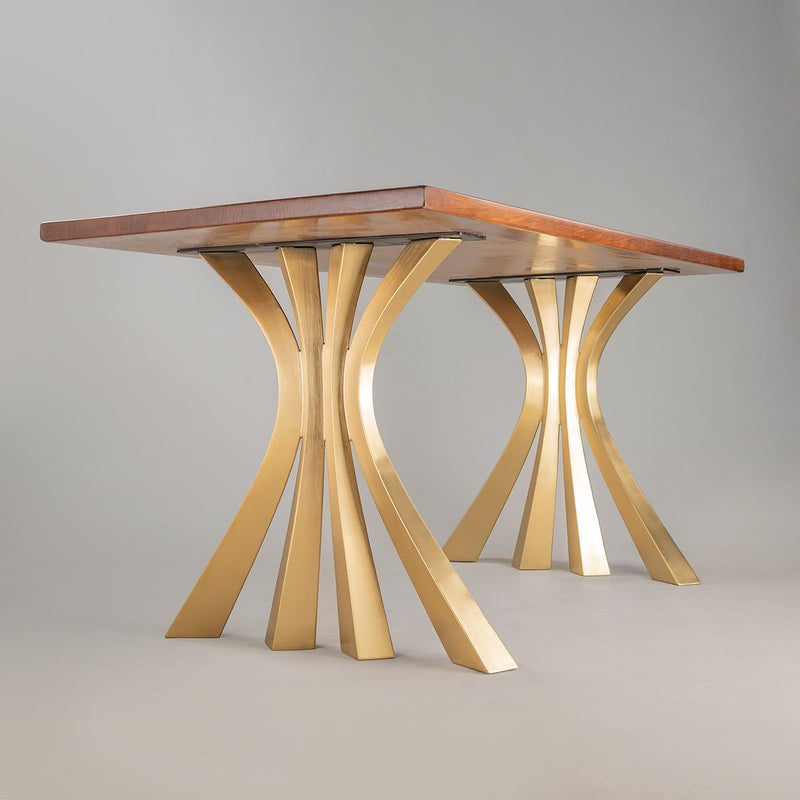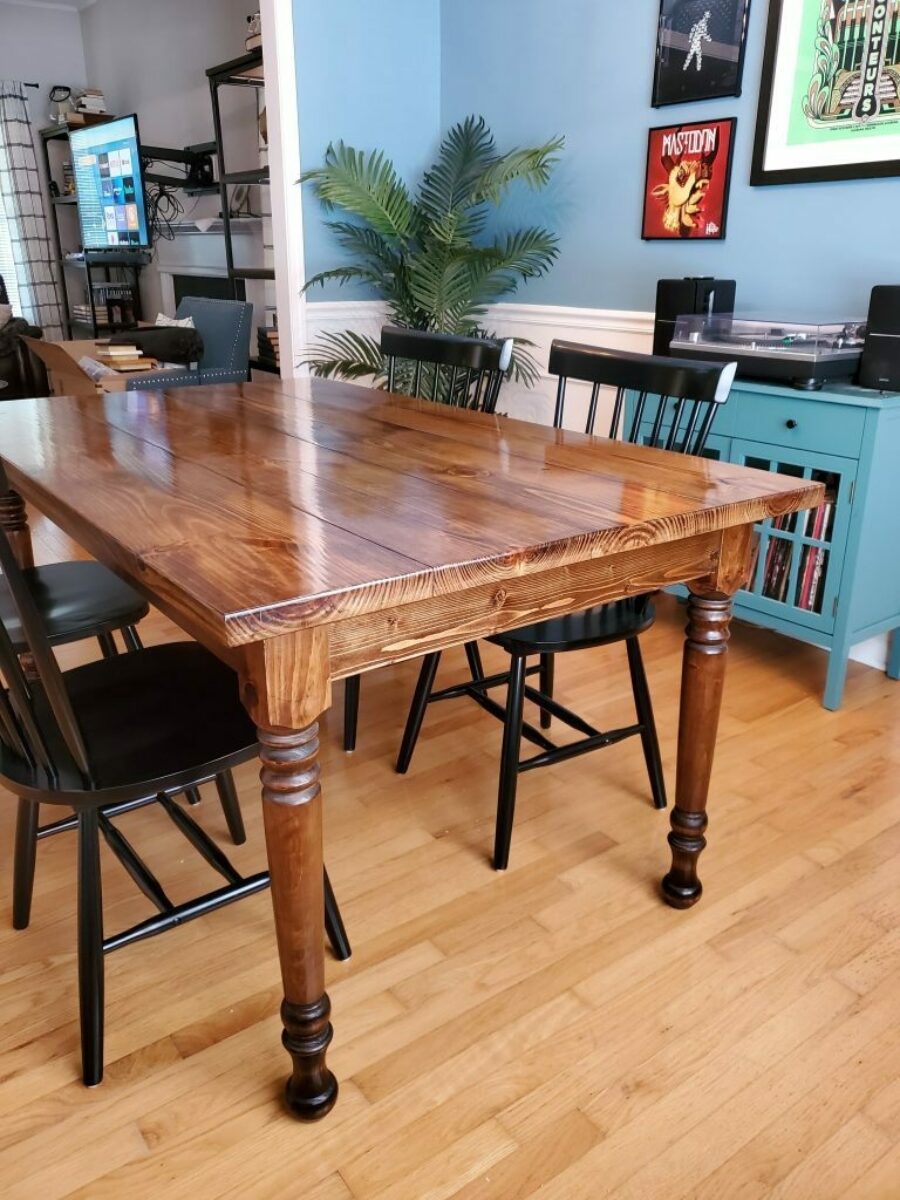Discover the Best Materials for Dining Room Table Legs for each Style
Discover the Best Materials for Dining Room Table Legs for each Style
Blog Article
Selecting the Perfect Table: What Styles Job Best for Your Home?
Picking the optimal dining table for your home can be a nuanced process that balances looks and performance. Whether your area leans in the direction of conventional sophistication, modern-day minimalism, rustic charm, or commercial stylish, the variety of designs available can cater to diverse tastes. Each layout supplies one-of-a-kind benefits and difficulties that can either enhance or disrupt your dining location's harmony. Understanding exactly how different products, forms, and dimensions engage with your existing decor is crucial. To browse these options efficiently and find a table that genuinely matches your home, consider the following aspects carefully.
Examining Your Area
Reviewing the measurements and format of your eating area is an essential very first step in picking the excellent eating table. Begin by measuring the size and width of the room, making up entrances, windows, and various other building attributes that could affect table positioning. This makes certain that your table not only fits but also permits comfortable activity around it.
Consider the number of people you usually captivate. A table should accommodate your house's daily demands while providing enough versatility for occasional visitors. As a guideline of thumb, allot a minimum of 24 inches of table width per person to make sure a comfortable dining experience.
It's likewise necessary to maintain ideal clearance around the table. Preferably, there must go to least 36 inches in between the table side and wall surfaces or other furniture, enabling very easy access and motion. For spaces where chairs with arms or extra storage systems like buffets are involved, enhancing this clearance to 48 inches is recommended.
Lights and environment play substantial roles too. Make certain that your table aligns with existing lighting components or plan for ample lights options. This extensive spatial analysis guarantees that your table not only fits literally however additionally harmonizes with your space's total capability and aesthetic.
Popular Table Styles

Traditional eating tables commonly include ornate information, curved legs, and rich timber finishes, evoking a feeling of classic style. They are perfect for homes with traditional design or those aiming to include a touch of refinement to their eating location.
Modern eating tables prioritize simpleness and clean lines, usually incorporating products like glass and steel. These tables are suitable for modern rooms, providing a sleek and uncluttered appearance that matches minimal style viewpoints.
Rustic table, on the various other hand, emphasize all-natural materials and a handcrafted look - dining room table legs. They usually feature redeemed timber and a troubled coating, creating a warm and inviting ambience. These tables work well in farmhouse-style homes or those seeking a cozy, organic feel
Industrial eating tables incorporate raw materials such as metal and timber, usually showcasing a practical visual. This design is well-suited for lofts or urban rooms, including a touch of tough charm and durability to the dining experience.
Each design offers distinct advantages, making it vital to choose one that straightens with your home's total style and your individual choices.
Product Selections
When picking a dining table, the selection of product plays a vital role in figuring out both the table's aesthetics and functionality. Timber, steel, glass, and composite materials each offer distinct advantages and difficulties, making it critical to align the material with your home's design and way of life demands.
Wood is a classic and flexible alternative, available in varieties such as oak, walnut, and mahogany. Recognized for its longevity and heat, wood enhances both traditional and modern insides. Nonetheless, it calls for regular maintenance to prevent scratches and warping.
Metal tables, frequently crafted from stainless steel, aluminum, or wrought iron, are applauded for their modern charm and effectiveness. They are especially matched Full Report for commercial or minimalist setups yet can be prone to damages and may feel chilly to the touch.
Glass table bring an air Get the facts of style and openness, perfect for smaller sized rooms as they produce an impression of even more area. While easy to tidy, glass can be at risk to spots and needs mindful handling to prevent chips and splits.
Composite materials, such as MDF and plywood, deal cost-efficient and customizable options, though they may lack the long life of all-natural products. Choosing the ideal material ensures your table is both a functional asset and an aesthetic joy.
Shape and Dimension Factors To Consider
After figuring out the proper product for your table, the following factor to consider is selecting the right sizes and shape to suit your room. The shape of the table dramatically affects the space's visual and capability. Rectangle-shaped tables, the most common form, are ideal for bigger spaces and can fit a greater variety of visitors. They also enable a more official dining experience. On the other hand, rounded tables promote a sense of affection and are excellent for smaller sized dining locations, motivating discussion by getting rid of corners and making every person feel equally included.
As a policy of thumb, designate at least 24 inches of table width per person to ensure comfy eating. Furthermore, consider the table's clearance area: there need to be at least 36 inches between the table side and the walls or various other furniture. Prolonging tables provide adaptability if you often organize bigger celebrations, supplying extra seating when required without occupying added room daily.
Matching Your Decoration
Choosing a dining table that integrates with your existing style is pivotal in producing a natural and welcoming space. A sleek, minimal table with clean lines is ideal for a contemporary home, while a vintage, ornate table matches an extra typical setting.
If your style features cozy tones and all-natural materials, consider a wooden table to improve the natural feel. On the other hand, a glass or metal table may be more ideal in an area dominated by cool shades and commercial elements.
Texture plays a critical function also. A rough-hewn, redeemed wood table can include character to a rustic room, while a refined marble surface area can raise an elegant eating area. Ultimately, think about the range and proportion of the table in connection with the area dimension and existing furnishings. A well-matched dining table not just improves visual allure however likewise Continued enriches the general eating experience.

Verdict
Picking the excellent eating table demands careful consideration of room, design, materials, shape, and dimension. Traditional tables complement timeless interiors with rich timber surfaces, while modern tables suit contemporary settings with glass and metal.
Report this page